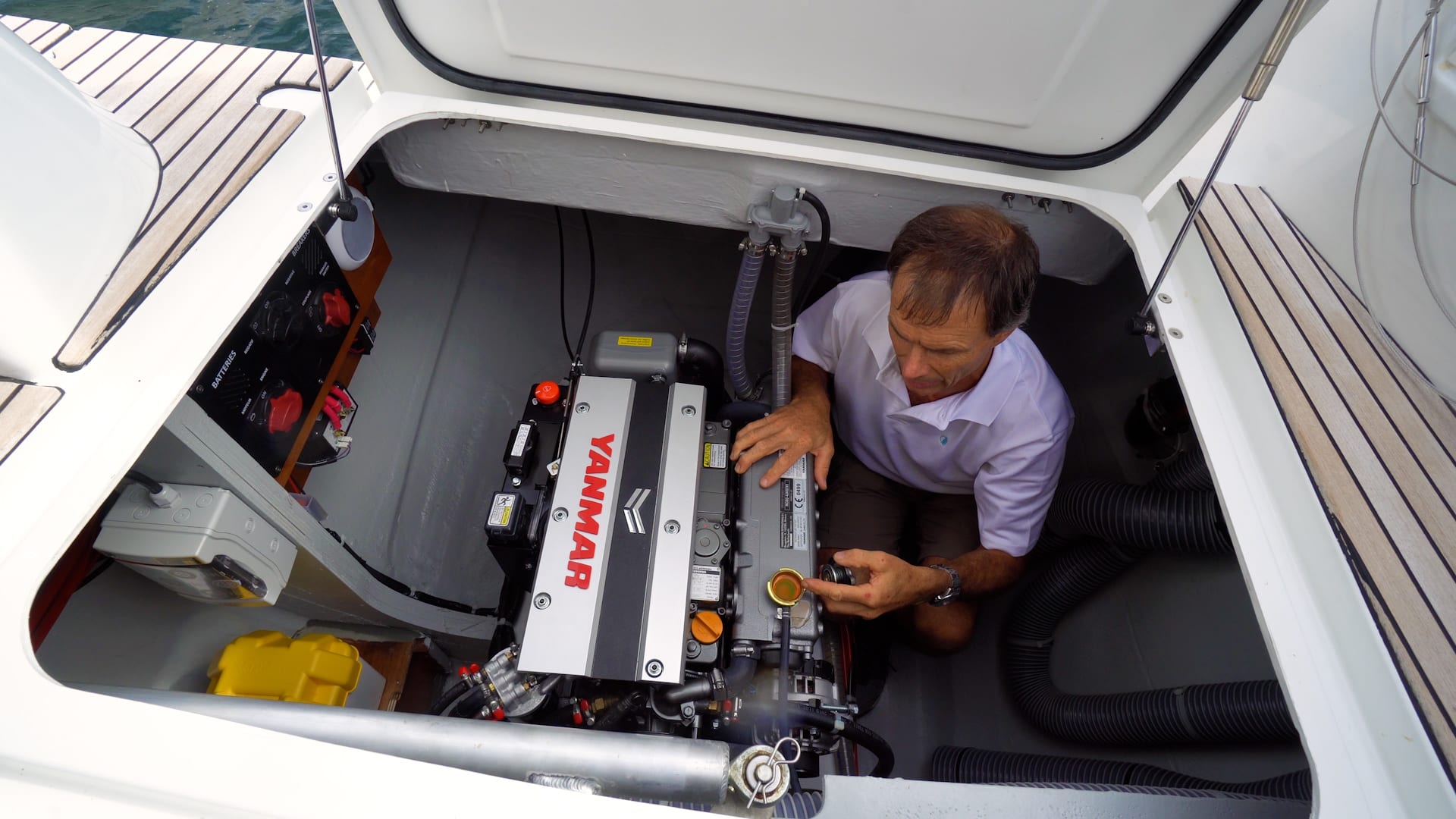How to perform routine engine maintenance
In this episode, John Gamlin from our exclusive service department VesselTec explains the simple steps for an engine inspection. John goes down into the engine bay and walks us through WOBBLES and what to do if you find something abnormal.
This demonstration is done on a Lagoon 42 with 2 Yanmar Diesel Engines. Processes may differ depending on your engine type and make.
BEFORE STARTING
- Isolaate the engine by turning it off
- Take off any loose clothing or tie up hair (if the engine has to be on)
- Do a general inspection for anything that might stand out – smells, leaks, excess fuel or water in the bilge.

WOBBLES

Water
Salt Water System
- Turn off water flow
- Check strainer and empty debris
- Check impeller for broken vains (if issues persist)
Fresh Water System
- Check reservoir fluid levels
- Open radiator cap and check levels, colour etc.
Oil
Engine Oil
- Pull out dipstick
- Clean dipstick
- Put the dipstick back in (all the way) and back out
- Check oil level and colour
Transmission Oil
- Pull out dipstick
- Clean dipstick
- Put the dipstick back in (but do not screw) and back out
- Check oil level and colour
You want your oil levels between the minimum and maximum markings (do not overfill). Colouring should not be milky (this could mean there is water inside), after a bit of use it should be black but not too black or thick.


Battery
- Check connections and movement, if loose use a spanner to tighten.
- If you find corrosion use a wire brush and then apply a protectant.
- Also, check connections on battery switches
Belts
- Check it is not fraying
- Check it is not too loose or too tight (check mechanic what deflection it should have)
You may need to take off a belt guard to get to this area.


Leaks
What to look for…
- Water
- Oil
- Salt crystals (this indicates salt water has been in the area)
- Corrosion
Areas to check…
- Where hoses terminate
- Check filters
- Check other components e.g. gaskets
If you find any leaks attempt to find the cause, tighten anything that may be loose and clean the area so that you know whether the issue has persisted when you next check the area.
Sound
- Turn engine on
- Go to the side to see the water
- Ensure there is a steady flow of water pulsing out
Exhaust
- Ensure sound is smooth
- No bad vibrations
If the sound is unusual contact your mechanic.

LATEST FROM THE INSPIRE AND LEARN SERIES
How to Trim Downwind – Basic Sailing Techniques
In this episode, we will delve into the art of sail trimming when sailing downwind. Whether you’re a seasoned sailor or just beginning to explore the boating world, understanding the nuances of sail trim can significantly enhance your boat handling abilities. Join our expert team as we provide insights, tips, and techniques to help you optimise your downwind sailing experience.
How to Trim Upwind – Basic Sailing Techniques
In this blog, we will look at how to trim your sails when sailing upwind. Sailing upwind is classified as sailing at any angle lower than 90 degrees to the wind. Sailing directly into the wind is not possible; therefore, to sail in the direction of the wind, you must continuously tack in a zig zagging motion.
How to Prevent Chafing
In this episode, Joe teaches us how to prevent chafing and what the critical chafing points are on a cruising catamaran.



